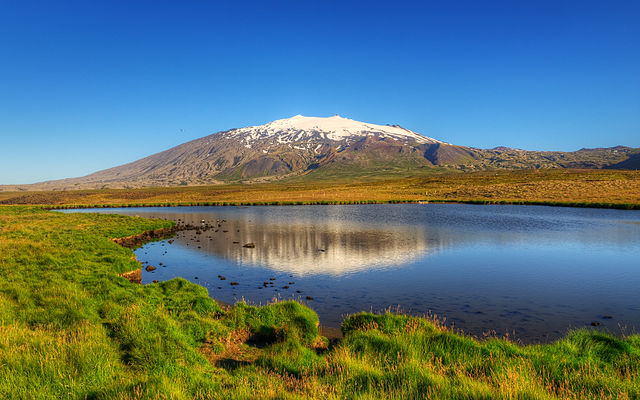In Norse mythology, Eir is a goddess or valkyrie associated with medical skill. Eir is attested in the Poetic Edda, compiled in the 13th century from earlier traditional sources; the Prose Edda, written in the 13th century by Snorri Sturluson; and in skaldic poetry, including a runic inscription from Bergen, Norway from around 1300. Scholars have theorized about whether these three sources refer to the same figure, and debate whether Eir may have been originally a healing goddess or a valkyrie. In addition, Eir has been compared to the Greek goddess Hygieia.
Menglöð sits with the nine maidens, including Eir, on Lyfjaberg (1893) by Lorenz Frølich.
Æsir or ēse are gods in Germanic paganism. In Old Nordic religion and mythology, the precise meaning of the term "Æsir" is debated, with it being able to refer to both the gods in general or specifically to one of the main families of gods, in contrast to the Vanir, with whom they waged war, ultimately leading to a joining of the families. The term can further be used to describe local gods that were believed to live in specific features in the landscape such as fells. In the Old English Wið færstice, the Ēse are referred to, along with elves, as harmful beings that could cause a stabbing pain, although exactly how they were conceived of by the author of the text is unclear.
Æsir gathered around the body of Baldr. Painting by Christoffer Wilhelm Eckersberg 1817
The Eyrarland Statue, typically interpreted as depicting Thor. Thor's riding across the sky is likely reflected in the modern Swedish word for "thunderstorm" - Swedish: åska, deriving from an earlier form meaning "the driving of the áss".
Óðinn throws his spear in the Æsir-Vanir war, illustration by Lorenz Frølich (1895)
Snæfell in Iceland, where according to Barðar saga, Barðr Snæfellsáss became an áss who was worshipped in the region and protected those who lived there.





